Short Film Selections
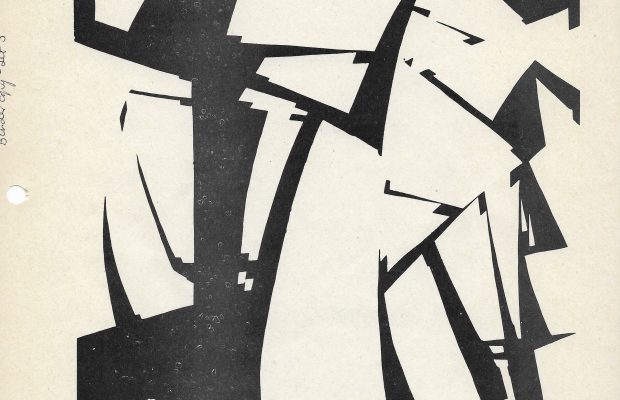
Toronto Film Society presented Short Film Selections on Monday, March 30, 1953 as part of the Season 5 Main Series, Programme 8.
TORONTO FILM SOCIETY
March 30, 1953
The order of the programme is as follows (refer to your programme notes detailed information on the films):-
- The Big Swallow – an early use of the “closeup” and “dollyshot” by Williamson of Great Britain – – in 1901.
- Barn Dance
- A Propos de Nice – Boris Kaufman informs us from New York that it was made to be shown completely without music.
- Night Lights – Wheaton Galentine USA 1952. Patterns of lights on office building windows, automobile headlights and street signs shot through prisms.
- Spring 1952Intermission
- Uirapuru
- La Rose et le Réséda
- Object Lesson
- Lot in Sodom
WHAT DID YOU THINK OF THIS PROGRAMME? AND INDIVIDUAL FILMS?
Use back of sheet –
TORONTO FILM SOCIETY EIGHT EXHIBITION MEETING FIFTH SEASON
MONDAY, MARCH 30, 1953
DOORS CLOSE AT 8.15 PM
ROYAL ONTARIO MUSEUM
The programme is composed of films selected from various cults.
Avant-Garde, Experimental, Unusual Surrealist and Documentary film groups. However as the excitement and anticipation which these names inspired have vanished, it is preferable to refer to the selection as INDEPENDENT.
The present is an especially suitable period in which to examine these independent works. The audience for them is larger than in the past and it is able to look at them uninfluenced by such fanfares and controversies as those accompanying the first Documentary films.
Each film can be judged merely by its results on the screen – but each should also be recognized as an attempt by its director to try out a new form of expression.
The history of Independent film making does not follow a logical progression as it is the result of the efforts of individuals working at random.
It is rather intriguing to recognize that what we regard as being the latest technical innovations have actually been present since the first days of the motion picture.
Georges Méliès, the stage magician recognized in the motion picture a new means of making magic and even by 1900 had exploited every photographic illusion known today.
In 1908 talking picture theatres across Canada proved financially impracticable as their prices were 100% too high (10¢).
Third dimension pictures called Plastigrams were shown by the use of red and green glasses in the 1920s. Abel Gance used wide screen projection in his Napolean in 1926. Several theatres in Canada installed the giant Grandeur Film projectors and film as wide as snapshots, 70mm for Hell’s Angels.
The technical means for new forms of expression in the motion picture have been available almost since the beginning. Three of them – TV, 3D and Wide Screen are the current rage. The situation requires Independents who will explore their possibilities as forms of expression. The two films in 3D of Norman McLaren have already been shown at the Odeon-Toronto – while his Neighbors which won an Academy Award is being shown at Shea’s.
What next? Will we recognize the new developments as they appear?
A Propos de Nice
France 1930
Scenario, Direction and Editing by
Jean Vigo
Photography – Boris Kaufman
Assistant – Gyula Zilzer
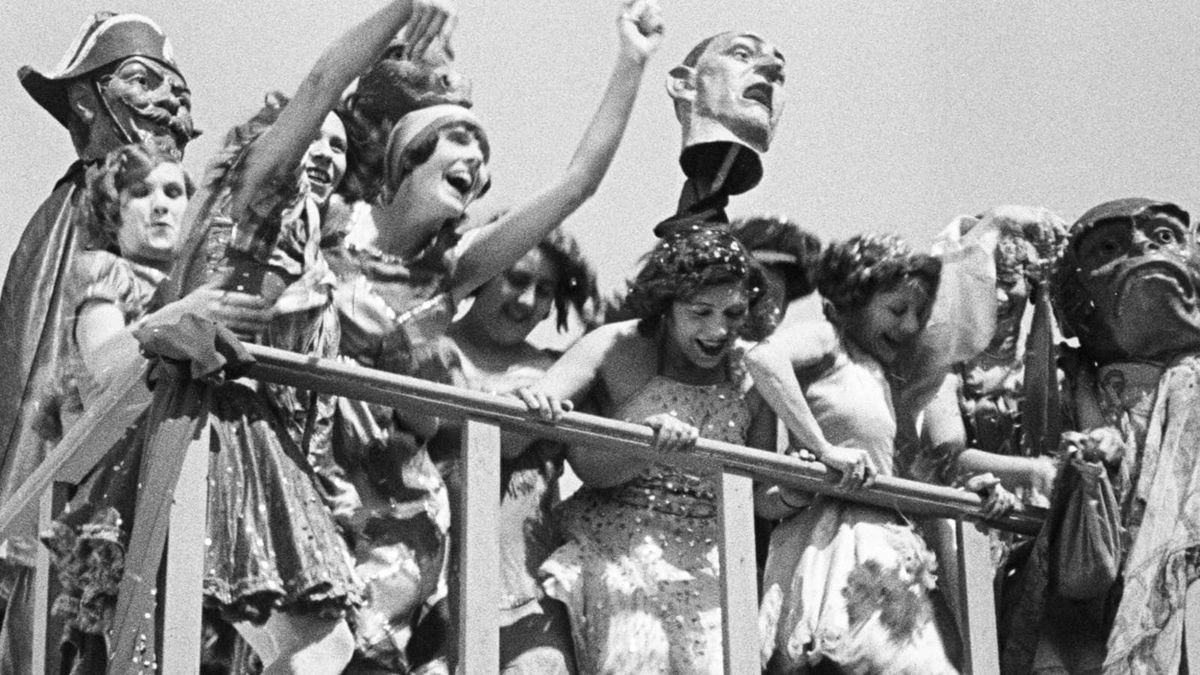
The avant-garde movement in France in the ‘thirties saw the rise of a talent which is one of the most original that the cinema has yet produced: and the early death of Jean Vigo in 1934, a few months after he completed L’Atalante, was probably the greatest loss the French films have suffered through the loss of a single individual.
George Morrison in Sequence 6
Vigo created but four complete films: his entire output can be seen in barely 3½ hours. With two short subjects (A Propos de Nice and Jean Taris, Champion de Natation) and two feature productions (Zéro de Conduite and L’Atlante), he left a permanent mark on film history.
Vigo was actually an amateur film-maker. He had nothing to do with the film industry as such. Lydu, his wife financed his first film; he paid for his second himself; and a French industrialist financed his third and fourth films.
His first film, A Propos de Nice has been described as one of the most unconventional documentaries ever made. The film was nearly three years in the making: for some of it Vigo used a 16mm camera – hidden under his coat. “The method was to take by surprise facts, actions, attitudes, expressions, and to stop shooting immediately when the subject became conscious of being photographed.”
At the première given at the Vieux Colombier before the Groupement des Spectacteurs d’Avant Garde, Vigo introduced the film as follows:-
“Social documentary is distinct from the ordinary short film and the weekly newsreel in that its creator will establish his own point of view … Conscious behaviour cannot be tolerated, character must be surprised by the camera if the whole ‘documentary’ value of this kind of cinema is to be achieved.
“We shall achieve our end if we can reveal the hidden reason for a gesture, if we can extract from an ordinary person his interior beauty – or a caricature of him – quite by chance, if we can reveal his complete inner spirit through his purely external manifestations.
“A Propos de Nice is only a rough draft … In this film, the description of a whole town begging from sheer laziness, we are spectators at the trial of a particular world. After indicating this life and atmosphere of Nice – and alas, elsewhere – the film proceeds to be a generalised impression of gross pleasures, to be different signs of a grotesque existence, of flesh and of death. These are the last twitchings of a society that neglects its own responsibilities to the point of giving you nausea and making you an accomplice in a revolutionary solution.”
La Rose et le Réséda
France 1948
Director – André Michel
Poem of Louis Aragon
Spoken by Jean-Louis Barrault
Music by George Auric
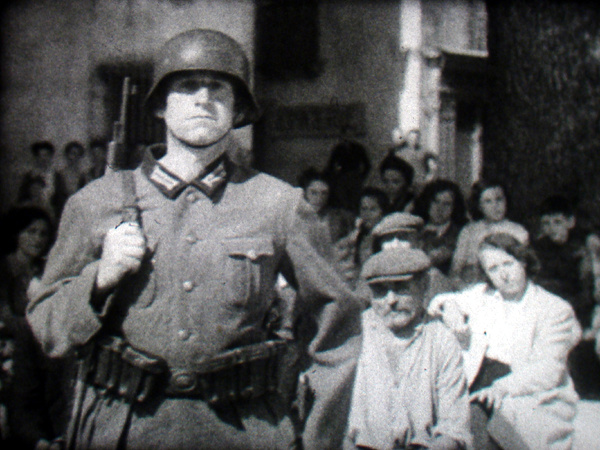
The Rose and the Mignonette is the visualisation in symbols of a poem dedicated to the memory of two members of the Resistance Movement. The thesis is that unified faith, regardless of individual beliefs, forms an unbreakable bond against brutal invading forces. The translation of the poem is as follows:-
The other had no god
And both of them were lovers
Of the same captive maid
They gave a different name to
The Light that lit their road
One never joined the movement
One was in for good
Yet each of them was faithful
In word, in heart, in deed
Each of them cried only
Live she, and come what would
One that believed in heaven
And one that had no god.
If hail is on the wheatfields
To hesitate is mad
And mad to speak of grievance
When fighting is the need
Though one believed in heaven
And the other had no god.
From somewhere in the fortress
A pair of bullets sped
One man staggers
One falls. Which is dead
He that believed in heaven
Or he that had not god?
On danker straw is laid
Which one is the colder
Or most by rats is gnawed
He that believed in heaven
Or he that had no god?
A rebel is a rebel
For each our tears are paid
As in the cheerless daybreak
From life to death they tread
He that believed in heaven
And he that had no god
Both call upon the maiden
Neither has betrayed
Each gives a blood as brilliant
Each gives a blood as red
He tht believed in heaven
And he that had no god.
It flows it flows and mingles
In the land for which they bled
Land which another season
Shall yield sweet grapes instead
Him that believed in heaven
Or him that had no god,
Sing plum sing pear, the cricket
Shall carol in the glade
Or flute or strings shall tell of
The love by each displayed
By skylark as by swallow
By rose by migonette for
This one maid.
After Louis Aragon, R.C. Knight
Lot in Sodom
U.S.A. 1933-34
Produced, written and directed by
J. Sibley Watson, Jr. and Melville Webber
Music – Louis Seigel
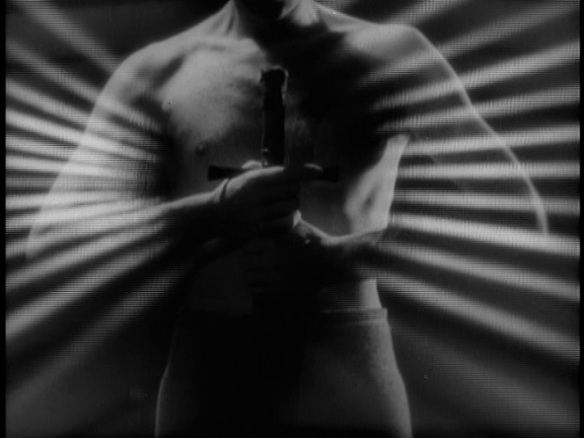
Dr. Watson built in Rochester the first optical printer in the world to make an amateur film, The Fall of the House of Usher. This was followed by Lot in Sodom, one of the most finished professional appearing of all independent films. When it was shown at the first meeting of the first film society in Canada, it literally stunned the audience. For a number of years it practically “played stock”, although in a somewhat altered version, at the 5th Avenue Playhouse in New York. The optical printer made possible for the first time a new method of combining images by superimposition, distortion by prisms, dissolves and multiple exposures. The method has been used many times since then in Hollywood montages, although it is doubtful that it has been used more effectively. Lot in Sodom is taken from the old testament narrative; its method is a rhythmical arrangement of symbols, offering an example of lyricism in the cinema.
Dr. Watson today is developing moving picture X-Rays using a 70mm motion picture camera he designed for scientific work.
Object Lesson
U.S.A. 1950
Produced, photographed and directed by
Christopher Young
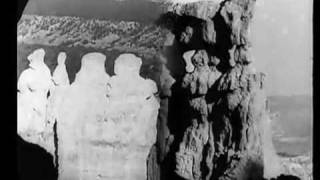
A skilful essay in which objects produce startlingly different reactions by their juxtaposition to unaccustomed backgrounds, it tells the story of the development and conflict of the forces of life. The forces are Nature (symbolized by rocks, vegetation); Idealism and the Ideas of Man (Greek statues); Art (the violin); War (Swords, etc.); Decay (destruction, etc.). Civilization arises, grows, is checked by economic depression: and destroyed by war.
Grand Prix Winner at the International Film Festival, Venice 1950 for “The World’s Best Avant-Garde Film”, the film is being procured from and exhibited under the auspices of Cinema 16, New York.
Spring 1952
Canada
Written, directed and edited by
Jack Leyland
Photography – Denis Dowling
This delightful little film, a poem on the first impression of spring after a winter in the city is Jack Leyland’s first completed picture. Most of it was shot over a week-end in Torotno, the city sequence following the script as closely as possible, the country shots being done from necessity “off the cuff”. Various camera speeds are skilfully employed for expressive and realistic effects. Again from necessity – “it was the easiest, but not the best way” – the director is the figure in the film. The picture was made with the music in mind.
Jack Leyland and Denis Dowling are members of Toronto Film Society
The remaining films on the 2 hour programme
will be selected from the following:
Barn Dance Canada 1952
An independent film by Ernest Reid made with a rural audience in mind, this has an explicit title. Shot near Woodbridge, it uses stop motion animation on landscapes, animals and things. As an explanation of the technique required for a quick shot, Reid said, “With the camera upside down, I shot a field of daisies one frame at a time; between taking each from I picked a daisy. The music track had already been recorded, every beat and note was marked so that the daisies were to appear in rhythm with the music. The flowers were picked in a pattern, so that in the accomplished shot, they run out in long lines from the camera while other areas sweep in with the music.”
Les Invisibles France 1904
Ferdinand Zecca, ‘one of the real giants of the early era of glorious absurdities’ is prized as a maker of trick films. He combined impish humor with a gift for making the camera persistently defeat or pervert the laws of space, time, gravity and ordered reason. As early as this period films were shown accompanied by music.
Meshes of the Afternoon U.S.A. 1933
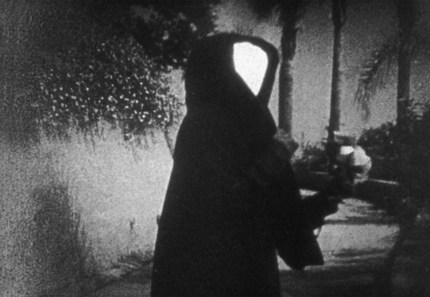
Maya Deren’s first film, as with her next three, was designed to be run in silence. It was made in collaboration with Alexander Hammid. The film begins in actuality, and eventually, ends there. But in the meantime the imagination, here given as a dream, intervenes and seizes on a casual incident and elaborates it into critical proportions. In the climax, the imagined, the dream becomes real. The picture demonstrated a unique gift for the medium to be used in later films which were to explore the temporal and spatial resources of the camera and the cutting process.
Uirapuru U.S.A. 1951
Written, directed, shot and edited by Samuel Zebba as a thesis film in partial fulfillment for a Master’s Degree, this is a documentary of the Indian Brazilian legend. It was shot among the Urubu Indians in the state of Maranhao and was designed to fit the music of Heitor Villa-Lobos. “A symbolic story of love, free and light as a bird; Love is captured by a girl and becomes real. But too soon it is destroyed by Old Age. Yet, although the body is killed, the idea of love lives on, free and untouched as before.” This study of the symbolism of a South American Indian tribe was shown at the Edinburgh Festival in 1951.
Water Stars U.S.A. 1951
Wheaton Galentine’s second film uses multiple and distorted images and colour of soap bubbles. His latest film is reported to be again abstract in effect, achieved by shooting moving headlights of motor cars at night through prisms.


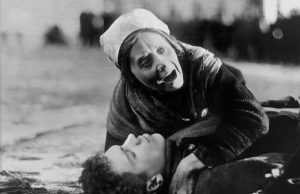
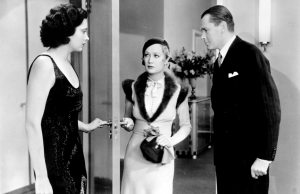






Leave a Reply